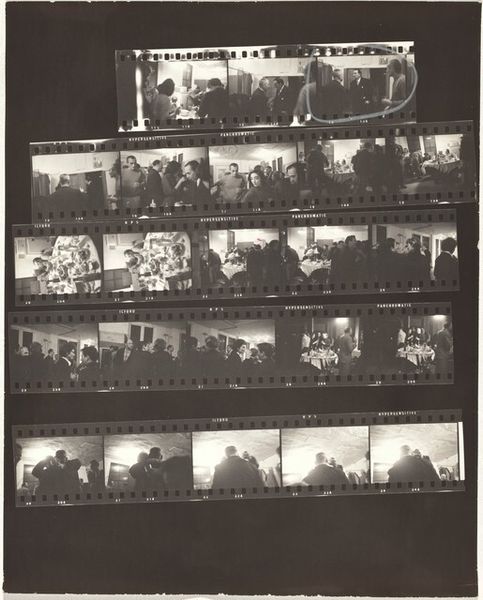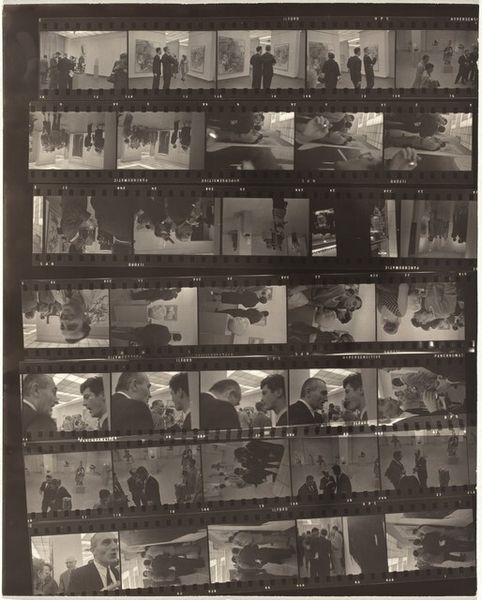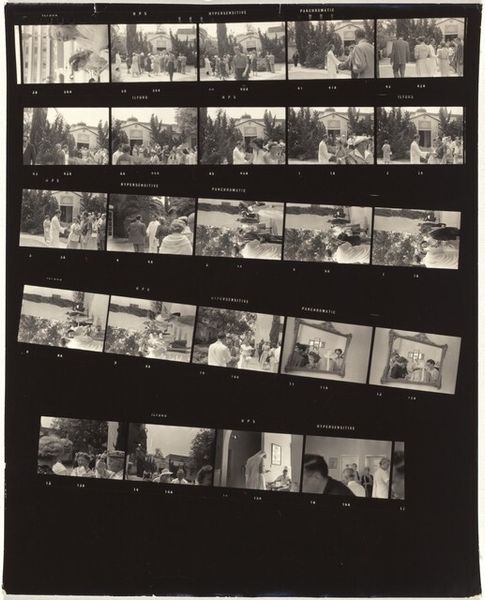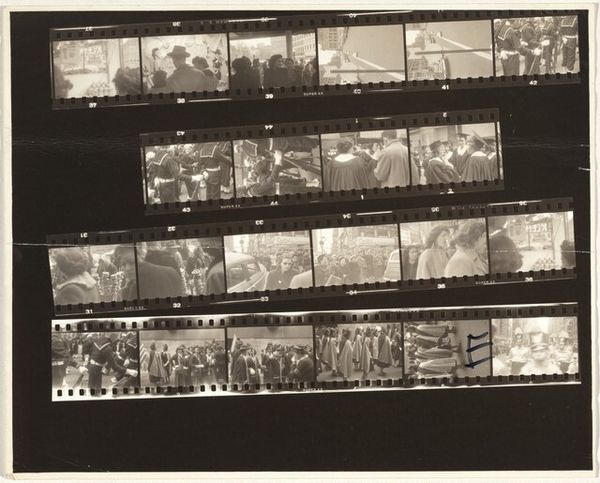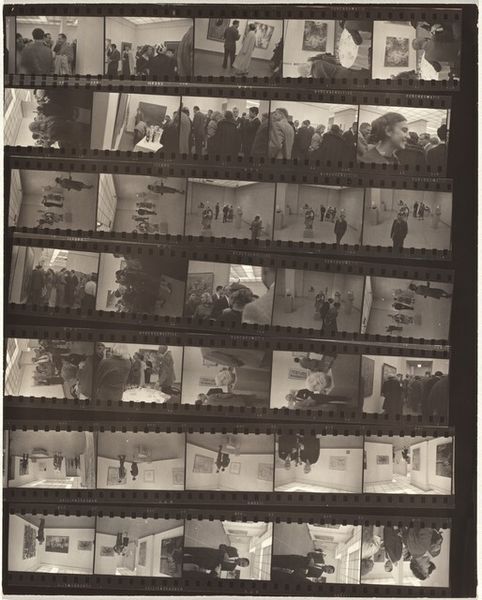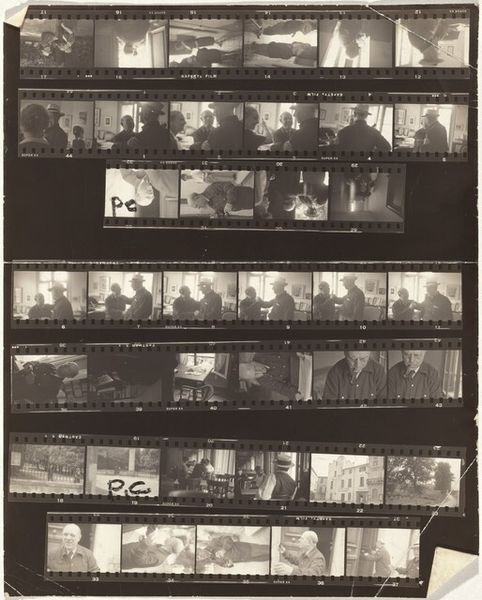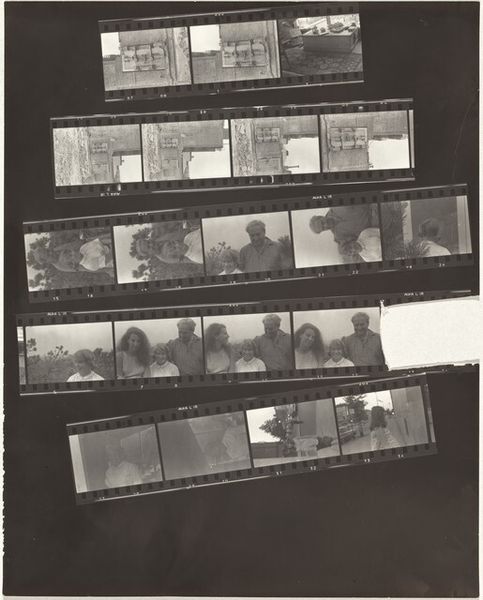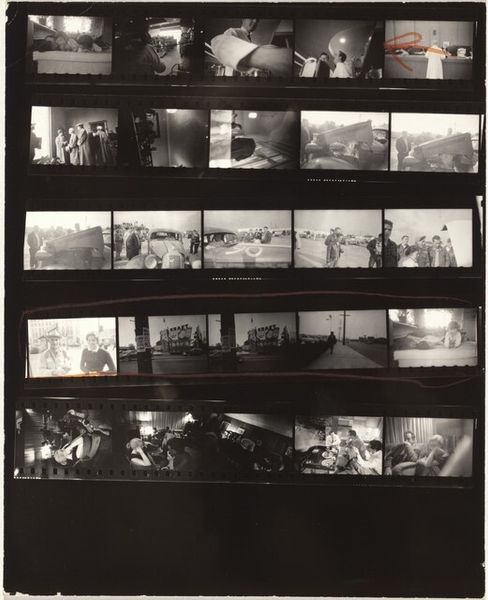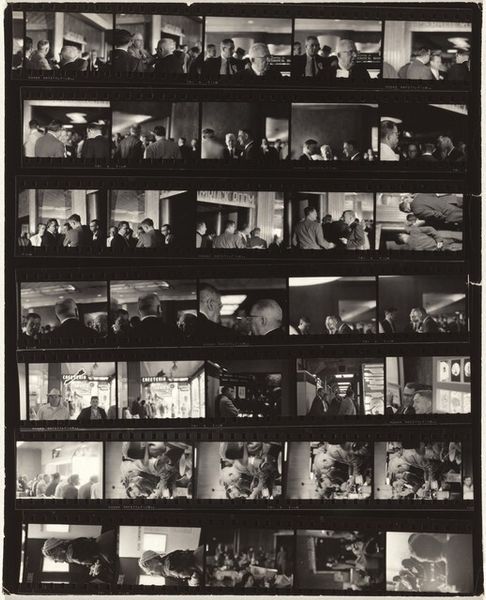
Dimensions: overall: 29.8 x 23.9 cm (11 3/4 x 9 7/16 in.)
Copyright: National Gallery of Art: CC0 1.0
Curator: Here we have Robert Frank's "Vienna--Early Europe 11," a gelatin-silver print from 1949. It’s a series of frames, a contact sheet showing different scenes, seemingly from daily life. Editor: My first impression is fragmentation. The individual images, trapped within the grid of the film strip, speak to a sense of lives observed rather than experienced. The contrast of the bright scenes, offset by the opaque darkness of the base, is almost brutal. Curator: That fragmentation speaks to Frank's larger project of capturing postwar Europe. Consider the history of photography itself—the contact sheet is traditionally a step towards a final, chosen image. By exhibiting the whole strip, he rejects the idea of a single decisive moment and highlights the constant act of seeing and recording. Editor: Exactly! Look closely and you notice the graininess, the almost rough quality of the silver. These weren't meant to be slick, easily digestible images. The visible process makes you confront the materials and labor, forcing you to recognize it is more than just a neutral, captured "reality." Curator: The locations shift. Indoor scenes of people reading, maybe in a classroom or library, contrast with outdoor views of a waterfront. The implied narratives seem incomplete. It’s as if we’re being presented with visual evidence of something we can’t fully grasp. The lack of resolution emphasizes the inaccessibility. Editor: I'm especially struck by the scenes depicting interiors and public gatherings, juxtaposed to those lonely open water shots. He shows the communal need alongside natural abundance; what they consume in tandem with what the world produces. It’s less about pretty architecture and more about this balance that these early European populations maintain. Curator: His street photography is social realism in action; he offers us not a romanticized view, but a slice of ordinary lives impacted by recent and lingering traumas. The choices, from camera settings to printing, emphasize that perspective. The work embodies his feelings, reflecting his position as an outsider both in his new home in America, and when traveling back in Europe after the war. Editor: By revealing every part of the process, Frank democratizes image making and creates space for new modes of interpretation. He seems to suggest a call for viewers to become conscious producers of the very environments we exist in. Curator: Ultimately, "Vienna--Early Europe 11" isn't just about documenting a time and place, but about exposing the raw and unfinished nature of history itself. Editor: Absolutely. It forces us to consider the material conditions that shape our view of that history and consider where to go from here.
Comments
No comments
Be the first to comment and join the conversation on the ultimate creative platform.

